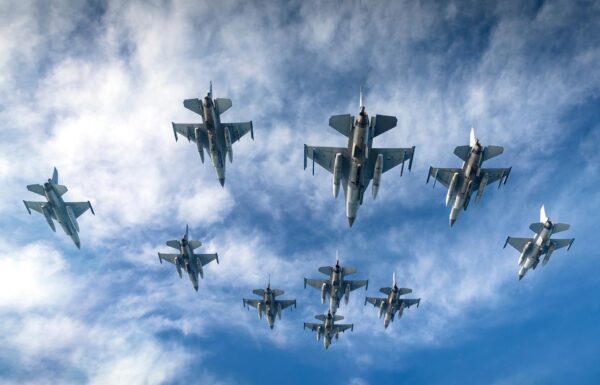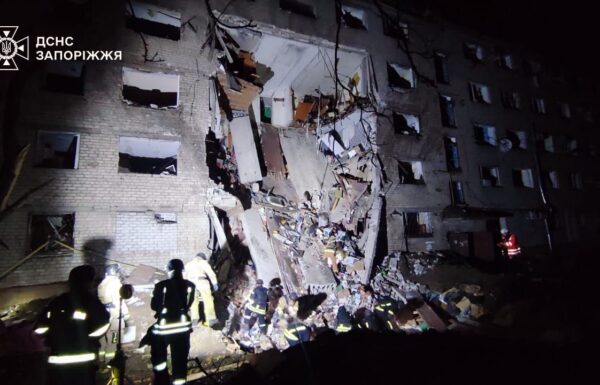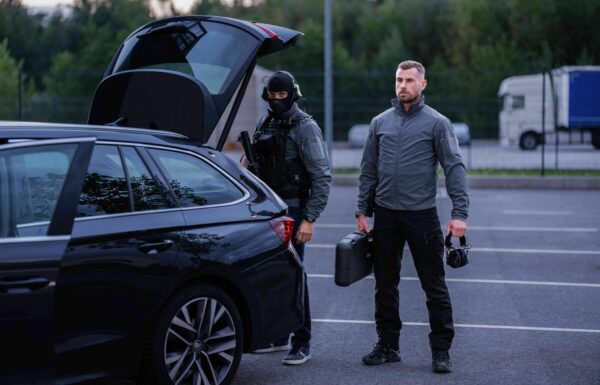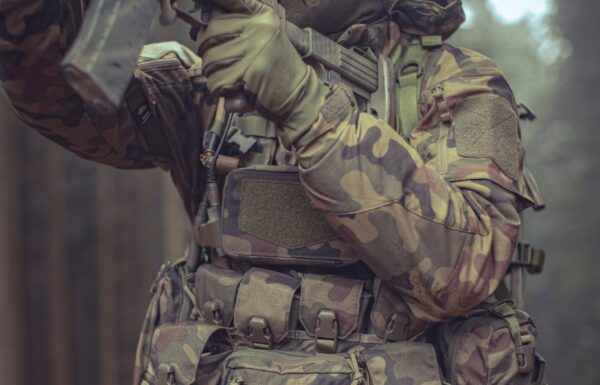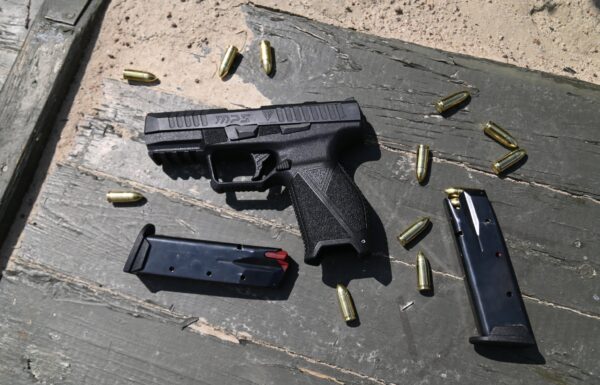“According to the Telegram channel “VDV Pskov ZOV,” an assault group from the 51st Guards Airborne Regiment, armed with the latest AK-12K assault rifles, carried out an assault on a fortified enemy area (i.e., Ukrainian positions) in the forested terrain of the Sumy region,” the message reads (Russian VDV assault units adopt shortened AK-12K carbines). AK -12K in use / Photo: Pavel Volkov
AK -12K in use / Photo: Pavel Volkov
The agency reports that, despite fierce resistance from the enemy (i.e., Ukrainian soldiers), the paratroopers captured the fortified area, killing over 10 Ukrainian service members.
The information cited coincides with reports in the Russian press that the Commander of the Russian Airborne Forces (VDV) and the Dnepr military group, Colonel General Mikhail Teplinsky, informed the Minister of Defense of the Russian Federation, Andrey Belousov, about progress in the testing of shortened AK-12K automatic carbines and RPL-20 light machine guns. These weapons were developed in response to feedback and suggestions from military users, following recommendations for their adoption. The Russian Ministry of Defense shared this information via the state-owned international news agency RIA Novosti. It was also reported at that time that the minister reviewed the performance of the Dnepr Group’s combat operations in the Russian-Ukrainian frontline zone. (Modified AK-12s for mobilized troops.)
“The improved combat performance of these modern small arms proved particularly effective during assault operations, thanks to better ergonomics, increased accuracy, higher rate of fire, and overall reliability,” according to the operational report on the new weapon systems.
The belt-fed RPL-20 light machine gun weighs 5.5 kilograms. It can be fitted with barrels of 415 mm or 590 mm in length. The weapon features an adjustable stock and rails for mounting aiming devices.
In May, it was reported that the Kalashnikov Concern delivered the first batch of AK-12K automatic carbines in multicam camouflage to a client. The carbine, chambered for the 5.45×39 mm round, has an overall length of 810 mm.
The latest shortened automatic carbine, the 5.45 mm AK-12K, is intended for neutralizing enemy personnel. The weapon was designed with the needs of airborne troops in mind and features improved technical, ergonomic, and operational characteristics that meet the demands of the modern battlefield.
In addition to the above technical claims, another opinion on the AK-12 platform appeared on Telegram. It was shared by a user known as Sensei, a Russian firearms instructor, who stated that the 2023 AK-12 automatic rifle is just as reliable as previous generations of Kalashnikov assault rifles. The specialist emphasized that during training, at least 60 people fire the new rifle daily, each going through 10–12 magazines.
“I have the opportunity to compare the performance of AK rifles from different production years used in identical conditions. In terms of reliability, the 2023 AK-12 model does not fall short of its predecessors,” said Sensei in a post titled “Sensei: Firearms and Tactical Training.”
At the same time, he noted that in other areas, the 2023 AK-12 surpasses previous versions of the AK-12. Advantages include improved ergonomics, a universal sling, and a two-way fire selector.
In June, it was reported that the Kalashnikov Concern had delivered a new batch of AK-12 (2023 model) rifles to the Russian Armed Forces. The updated AK-12 was introduced after a review of military feedback, incorporating observations, suggestions, and concerns based on operational experience. Notably, the 2023 AK-12 received a non-removable slotted flash suppressor-compensator and a trigger group with a two-position safety selector.
As a counterpoint, the same author criticized the myth surrounding Kalashnikov assault rifles as being completely reliable under any circumstances. According to him, mass-produced AK rifles are often compared to a fictional, legendary weapon that supposedly never fails and requires no maintenance. Still, such a weapon simply doesn’t exist. “The mistake most people make is trying to compare the 2023 AK-12 model to an idealized myth, a Kalashnikov assault rifle that never breaks, never rusts. That weapon doesn’t exist,” he said.
The instructor stressed that every mechanical system can fail and requires regular maintenance. While an AK rifle can function without cleaning, its service life will be shortened. Moreover, in harsh environments, uncleaned parts of the gun may start to rust.
In July, the reconnaissance and sabotage assault group “Rusich” [ДШРГ «Русич»] published a statement in which a soldier complained about corrosion on an AK-12 rifle. The group shared photos of disassembled weapon parts. The dust cover and gas piston showed signs of wear, and parts of the receiver were heavily rusted. The rifle had reportedly been in use for six months and had received regular maintenance.




Technical condition of weapon components after use / Photos: DShRG “Rusich”
“After three days in a humid climate, without direct exposure to rainfall, this is what it looks like,” the report states.
At the same time, no further details were provided about the weapon’s operating conditions. It is also unclear how widespread this issue is.
As has often been the case in Russia, and previously in the Soviet Union, echoing the “glorious” era of the former system, the Kalashnikov Concern reported that it had received a letter of gratitude from soldiers of a frontline military unit participating in the war against Ukraine, thanking them for weapons that, according to them, bring victory closer. This information was published on the company’s official website.
Among the weapons mentioned in the soldiers’ message of thanks were AK-12 automatic rifles (Types 1, 2, and 3), the AK-12K carbine, the RPL-20 light machine gun, and the SVCh rifle. In response, representatives of the concern emphasized that Kalashnikov rifle specialists regularly travel to the front lines, where they receive direct feedback from troops.
Previously, the Russian Ministry of Defense announced that belt-fed RPL-20 light machine guns intended for airborne troops had been delivered to areas affected by the war in Ukraine, and that the forces began using them in combat immediately.



